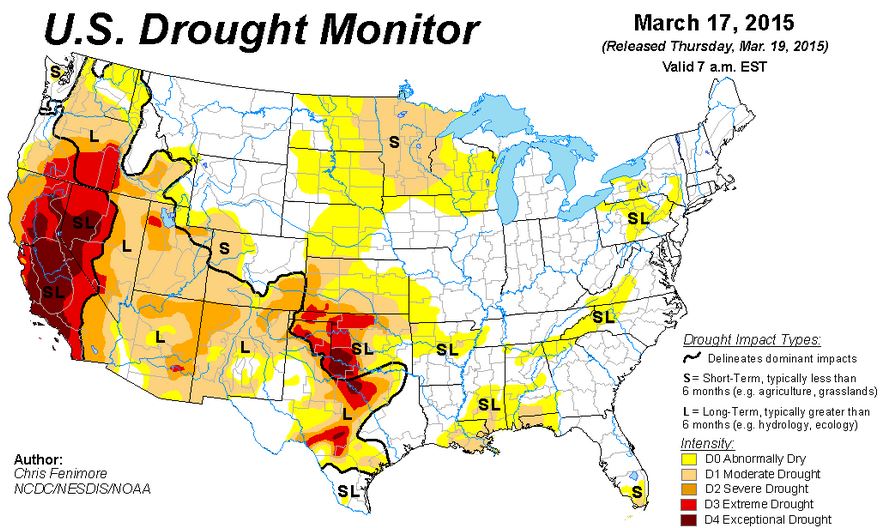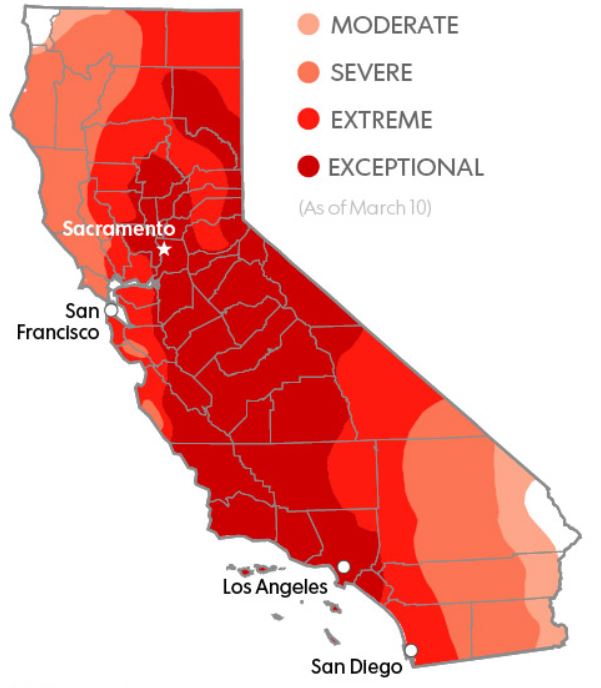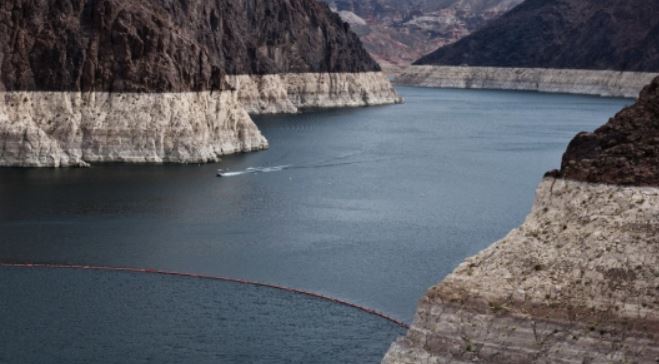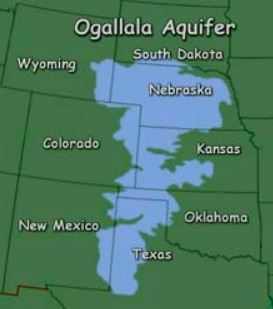
Rick Mills “No Creek To Be Up”
As a general rule, the most successful man in life is the man who has the best information
Drought is a normal recurring feature of the climate in most parts of the world. It doesn’t get the attention of a tornado, hurricane or flood. It’s slower and less obvious, a much quieter disaster creeping up on us unawares.
Climate change is currently warming many regions, warmer temperatures increase the frequency and intensity of heat waves and droughts.
We can prepare for some climate change consequences with public education, water conservation programs, limiting pumping from our freshwater aquifers to recharge rates and putting in place early warning systems for extreme heat events.
Unfortunately some things cannot be prepared for…like the pervasiveness and persistence of decade’s long drought caused by climate change.
The collapse of the world’s earliest known empire was because of drought.
Akkad
The Akkadians of Mesopotamia forged the world’s first empire more than 4,300 years ago. The Akkad’s seized control of cities along the Euphrates River and swept up onto the plains to the north – in a short period of time their empire stretched 800 miles, all the way from the Persian Gulf to the headwaters of the Euphrates, through what is now Iraq, Syria and parts of southern Turkey.
Tell Leilan was a small village founded by some of the world’s first farmers. It’s located in present day Syria and has existed for over 8,000 years. The Akkad’s conquered Tell Leilan around 2300 B.C. and the area became the breadbasket for the Akkadian empire.
After only a hundred years the Akkadian empire started to collapse.
In 1978, Harvey Weiss, a Yale archaeologist, began excavating the city of Tell Leilan. Everywhere Weiss dug he encountered a layer of dirt that contained no signs of human habitation. This dirt layer corresponded to the years 2200 to 1900 B.C. – the time of Akkad’s fall.
The Curse of Akkad
For the first time since cities were built and founded,
The great agricultural tracts produced no grain,
The inundated tracts produced no fish,
The irrigated orchards produced neither wine nor syrup,
The gathered clouds did not rain, the masgurum did not grow.
At that time, one shekel’s worth of oil was only one-half quart,
One shekel’s worth of grain was only one-half quart. . . .
These sold at such prices in the markets of all the cities!
He who slept on the roof, died on the roof,
He who slept in the house, had no burial,
People were flailing at themselves from hunger.
The events described in “The Curse of Akkad” were always thought to be fictional. But the evidence Weiss uncovered at Tell Leilan (along with elevated dust deposits in sea-cores collected off Oman) suggest that localized climate change – in Tell Leilan’s case a three hundred year drought – desertification – was the major cause.
“Since this is probably the first abrupt climate change in recorded history that caused major social upheaval. It raises some interesting questions about how volatile climate conditions can be and how well civilizations can adapt to abrupt crop failures.” Dr. Harvey Weiss, Yale University archeologist
Ghost Empire
Perhaps the most notable empire decline due to drought, or altered precipitation patterns, was the Maya empire. At the peak of their glory the Maya ranged from Mexico’s Yucatán peninsula to Honduras. Some 60 Maya cities – each home to upwards of 70,000 people – sprang up across much of modern day Guatemala, Belize, and Mexico’s Yucatán Peninsula.
“The early Classic Maya period was unusually wet, wetter than the previous thousand years…Mayan systems were founded on those [high] rainfall patterns. They could not support themselves when patterns changed.” Douglas Kennett, an environmental anthropologist at Pennsylvania State University.
During the wettest centuries, from 440 to 660, Maya civilization flourished.
Then things got worse, much worse. The following centuries, from the mid 600’s to roughly 1000 A.D., did not treat the Mayas kindly, they suffered repeatedly from drought, oftentimes extreme drought lasting a decade and more.
Between 1020 and 1100 the region suffered the longest dry spell in many millennia. The Maya’s suffered crop failure after failure, famine, death and eventually mass migration.
“Yucatecan lake sediment cores … provide unambiguous evidence for a severe 200-year drought from AD 800 to 1000 … the most severe in the last 7,000 years … precisely at the time of the Maya Collapse.” Richardson Gill, The Great Maya Droughts
After 200 years of drought, really just an eye-blink of time, famine and drought held sway and people walked away leaving behind a ghost empire.
American Drought
“Once upon a time, much of the state of California was a barren desert. And now, thanks to the worst drought in modern American history, much of the state is turning back into one. Scientists tell us that the 20th century was the wettest century that the state of California had seen in 1000 years. But now weather patterns are reverting back to historical norms, and California is rapidly running out of water. It is being reported that the state only has approximately a one year supply of water left in the reservoirs, and when the water is all gone there are no contingency plans.” Michael Synder, The Economic Collapse
California saw an estimated $2.2 billion in agricultural losses and the elimination of 17,000 farming jobs in 2014. California is responsible for nearly half of all fruits, vegetables and nuts produced in the U.S.
In 2014, California had its warmest year on record, and it just had its warmest winter on record – high in the Sierra Nevada’s California’s snowpack is at a 25 year low.
A Stanford University report says that nearly 60 percent of the state’s water needs are now met by groundwater. That’s up from 40 percent in years when normal amounts of rain and snow fall.
In many areas wells that use to draw water from 500 feet are now being drilled to 1,000 feet and more, costing upwards of $300,000 for one well.
“California’s Central Valley isn’t the only place in the U.S. where groundwater supplies are declining. Aquifers in the Colorado River Basin and the southern Great Plains also suffer severe depletion. Studies show that about half the groundwater depletion nationwide is from irrigation. Agriculture is the leading use of water in the U.S. and around the world, and globally irrigated farming takes more than 60 percent of the available freshwater.
Lake Mead ‘Bathtub Rings’ Show Lake Level Decline
The Colorado River Basin, which supplies water to 40 million people in seven states, is losing water at dramatic rates, and most of the losses are groundwater. A new satellite study from the University of California, Irvine and NASA indicates that the Colorado River Basin lost 65 cubic kilometers (15.6 cubic miles) of water from 2004 to 2013. That is twice the amount stored in Lake Mead, the largest reservoir in the U.S., which can hold two years’ worth of Colorado River runoff. As Jay Famiglietti, a NASA scientist and study co-author wrote here, groundwater made up 75 percent of the water lost in the basin.
Farther east, the Ogallala Aquifer under the High Plains is also shrinking because of too much demand. When the Dust Bowl overtook the Great Plains in the 1930s, the Ogallala had been discovered only recently, and for the most part it wasn’t tapped then to help ease the drought. But large-scale center-pivot irrigation transformed crop production on the plains after World War II, allowing water-thirsty crops like corn and alfalfa for feeding livestock.
But severe drought threatens the southern plains again, and water is being unsustainably drawn from the southern Ogallala Aquifer. The northern Ogallala, found near the surface in Nebraska, is replenished by surface runoff from rivers originating in the Rockies. But farther south in Texas and New Mexico, water lies hundreds of feet below the surface, and does not recharge. Sandra Postel wrote here last month that the Ogallala Aquifer water level in the Texas Panhandle has dropped by up to 15 feet in the past decade, with more than three-quarters of that loss having come during the drought of the past five years. A recent Kansas State University study said that if farmers in Kansas keep irrigating at present rates, 69 percent of the Ogallala Aquifer will be gone in 50 years.
This coincides with a nationwide trend of groundwater declines. A 2013 study of 40 aquifers across the United States by the U.S. Geological Survey reports that the rate of groundwater depletion has increased dramatically since 2000, with almost 25 cubic kilometers (six cubic miles) of water per year being pumped from the ground. This compares to about 9.2 cubic kilometers (1.48 cubic miles) average withdrawal per year from 1900 to 2008.” Dennis Dimick,‘If You Think the Water Crisis Can’t Get Worse, Wait Until the Aquifers Are Drained,’ National Geographic
Drought Forecast to continue
“Drought pressures will increase in California and western areas of the United States this spring even as the dry season begins, the government’s Climate Prediction Center said Thursday.
“Periods of record warmth in the West and not enough precipitation during the rainy season cut short drought relief in California this winter, and prospects for above-average temperatures this spring may make the situation worse,” Jon Gottschalck, chief of the Operational Prediction Branch at the Climate Prediction Center, said in issuing its spring outlook…
The western United States is expected to see the multi-year drought continue and intensify in 2015 and extend into the northern Plains, the outlook said. Drought is forecast to persist in California, Nevada and Oregon through June, with the onset of the dry season in April.
“I see nothing that would indicate much improvement, if any improvement, in the overall situation for field crops for 2015,” said Brad Rippey, meteorologist with the U.S. Department of Agriculture, noting he expected to see a significant drop in field crops again this year in California.
“Drought is also forecast to develop in remaining areas of Oregon and western Washington. Drought is also likely to continue in parts of the southern Plains,” NOAA said.
Drought also is likely in the northern Plains, upper Mississippi Valley and western Great Lakes… Above-average temperatures are favored this spring across the Far West, northern Rockies, and northern Plains eastward to include parts of the western Great Lakes, and for all of Alaska.” Reuters, Climate Center Sees Drought Getting Worse in Western US, Voice of America
Canadian Water Diversion
Canada has a lot of fresh water – 35,500,000 Canadians own seven percent of the world’s renewable supply. We’ve been blessed with an abundance of the world’s most important resource. It’s a resource we’re going to eventually have to share with our southern neighbor.
There have been numerous proposals about transferring large amounts of freshwater from Canada to the United States. Following are breakdowns on three of the most ambitious plans conceived to date.
The Great Recycling and Northern Development (GRAND) Canal of North America (GCNA) wasdesigned by Newfoundland engineer Thomas Kierans to alleviate North America’s freshwater shortage problems.
The GNAC would collect fresh water run-off into James Bay by means of a series of outflow-only, sea level dikes-constructed across the northern end of James Bay. These dikes would capture the fresh water before it mixes with the salty water of Hudson Bay and create a new source of fresh water equivalent to 2.5 times the flow over Niagara Falls.
Canals would be built to transfer the water from James Bay into the Great Lakes and from the Great Lakes canals and pipelines move the water to areas in the U.S.
The North American Water and Power Alliance (NAWPA) was designed to bring water from Alaska and northern British Columbia to the U.S. By building a series of large dams, the northward flow of the Yukon, Peace, Liard, Tanana, Copper, Skeena, Bella Coola, Dean, Chilcotin, and Fraser rivers would be reversed to move southward into the Rocky Mountain Trench where the water would be trapped in a giant reservoir approximately 800 kilometers long.
A canal would then be built to take the water southward into Washington state where it would be channeled through existing canals and pipelines. The annual volume of water to be diverted through the NAWAPA project is estimated to be roughly equivalent to the average total yearly discharge of the entire St. Lawrence River system in Canada. The amount of water available is estimated to be enough that some would be available for use by Mexico via the Colorado River.
The Central North American Water Project (CeNAWAP) consists of a series of canals and pumping stations linking Great Bear Lake and Great Slave Lake in the NWT to Lake Athabaska and lake Winnipeg and then the Great Lakes.
A variation on the CeNAWAP is the Kuiper Diversion Scheme which links the major western rivers, the Mackenzie, the Peace, the Athabasca, North Saskatchewan, Nelson and Churchill rivers, into a mega water diversion scheme.
Obviously between the three projects hundreds of billions of gallons of fresh water could be supplied to the parched areas of the United States, Canada, and Mexico. New areas of cultivation would be opened up, thousands of jobs would be created and new dams would supply unimaginable amounts of electricity.
Non-Starters
Although the principal’s of these three water diversion projects are the same – water for parched areas of the U.S. and potentially Mexico (this author will remain skeptical of water ever reaching Mexico until it actually happens) politically and environmentally two of the proposals, NAWPA & CeNAWAP, would be non-starters in Canada.
“With the NAWPA diversionary plan, no new fresh water will be added to the system. NAWPA proposes to dam mostly Canadian rivers to create massive new reservoirs and then divert the water to drought afflicted regions, mostly in the American Southwest. Only existing sources of fresh water will be collected and redirected. By necessity and by plan, NAWPA will deprive some areas (mostly in Canada) that now have water, and flood other areas for reservoirs (also mostly in Canada) where at the present time no water flows. The ultimate recipients of the NAWPA water will for the most part be in the American Southwest. Aside from being tremendously expensive to build and operate, NAWPA will have massive and yet to be determined environmental impacts. Abundant animal and vegetable life will be damaged and destroyed. Populations of human and other species will have to be relocated.
The GRAND Canal proposes no such flooding or diversion. The new water will collected in existing reservoirs (James Bay and the Great Lakes) and flow along existing or new man-made and environmentally friendly waterways to existing reservoirs or aquifers. Nature will be respected and environmental impacts will be kept to a minimum.” Thomas Kierans, Wikipedia
Conclusion
Mark Twain said “Whisky is for drinking; water is for fighting over.”
Water is a commodity whose scarcity will have a profound effect on the world within the next few decades – this makes the reevaluation of our values regarding fresh water use not voluntary but mandatory. We Canadians are going to have to drastically change the way in which we view our freshwater as a resource.
The issue of Canada diverting part of its fresh water resources to the US has never been on, or has long since faded off most Canadians radar screens. If widespread U.S. drought conditions persist that’s going to change.
Is water on your radar screen?
If not, it should be.
Richard (Rick) Mills
Richard lives with his family on a 160 acre ranch in northern British Columbia. He invests in the resource and biotechnology/pharmaceutical sectors and is the owner of Aheadoftheherd.com. His articles have been published on over 400 websites, including:
WallStreetJournal, USAToday, NationalPost, Lewrockwell, MontrealGazette, VancouverSun, CBSnews, HuffingtonPost, Beforeitsnews, Londonthenews, Wealthwire, CalgaryHerald, Forbes, Dallasnews, SGTreport, Vantagewire, Indiatimes, Ninemsn, Ibtimes, Businessweek, HongKongHerald, Moneytalks, SeekingAlpha, BusinessInsider, Investing.com, MSN.com and the Association of Mining Analysts.
Please visit www.aheadoftheherd.com – We’re telling you things everyone else doesn’t already know.
Moderated investor friendly forums – Ahead of the Herd is powered by Community Intelligence.
Free highly acclaimed newsletter featuring today’s investable junior resource companies.
Legal Notice / Disclaimer
This document is not and should not be construed as an offer to sell or the solicitation of an offer to purchase or subscribe for any investment.
Richard Mills has based this document on information obtained from sources he believes to be reliable but which has not been independently verified.
Richard Mills makes no guarantee, representation or warranty and accepts no responsibility or liability as to its accuracy or completeness. Expressions of opinion are those of Richard Mills only and are subject to change without notice. Richard Mills assumes no warranty, liability or guarantee for the current relevance, correctness or completeness of any information provided within this Report and will not be held liable for the consequence of reliance upon any opinion or statement contained herein or any omission.
Furthermore, I, Richard Mills, assume no liability for any direct or indirect loss or damage or, in particular, for lost profit, which you may incur as a result of the use and existence of the information provided within this Report.
MORE or "INDUSTRY ANALYSTS"
Mickey Fulp - Mercenary Alert: Is Zinc Still a Four-Letter Word?
Read the Report Here Mercenary Alert: Is Zinc Still a Four-Letter Word? ... READ MORE
Top 10 Financings of May 2017
May saw 125 financings close in the Canadian financial markets for C$366.5 million including 64 fina... READ MORE
ORENINC INDEX jumps as gold gets political again
ORENINC INDEX – Monday, June 12, 2017 North America’s leading junior mining finance data provide... READ MORE
The Week of June 5th to June 11th, 2017 "A Brief Look Back Into Tomorrow"
The new North American trading week began on Monday June 5th with... READ MORE
The Week of May 29th to June 4th, 2017 "A Brief Look Back Into Tomorrow"
The new North American trading week began on Monday, May 29th wit... READ MORE















